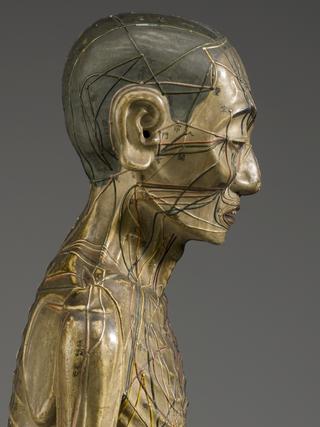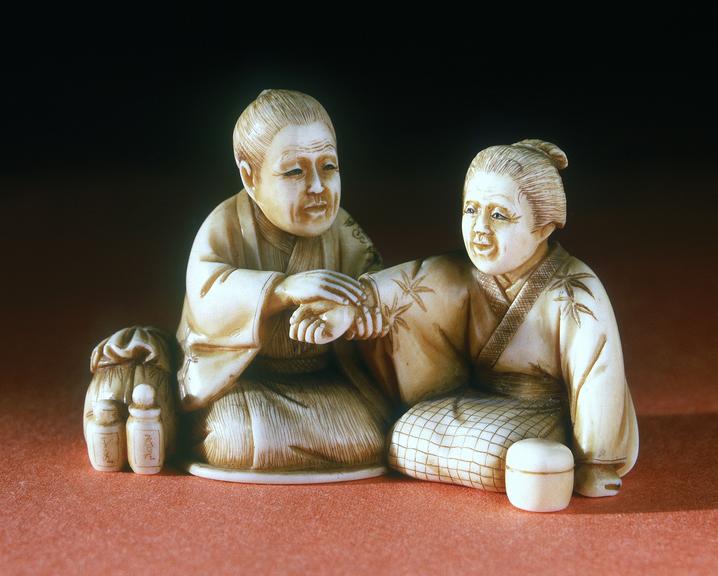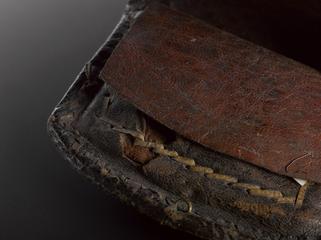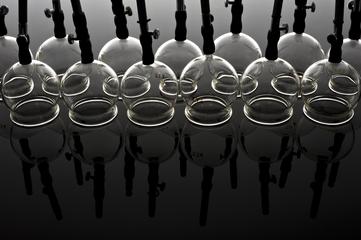

Ivory figure, depicting a doctor feeling the pulse of a woman patient, signed Chikaaki, Japan, late 1800s
A doctor is feeling the pulse of his female patient in this small ivory netsuke. Netsuke are toggle-like ornaments used to hang objects, such as medicine boxes or tobacco pouches, from the sash of a kimono – a traditional form of Japanese dress.
In Traditional Chinese medicine and traditional Japanese medicine, the pulse is believed to be an indication of how strong or weak the energy force, known as qi, is within the body.
Look closer
Ivory netsukeDetails
- Category:
- Asian Medicine
- Collection:
- Sir Henry Wellcome's Museum Collection
- Object Number:
- A645063
- Measurements:
-
overall: 43 cm x 62 mm x 33 mm, 0.045kg
- type:
- netsuke
- credit:
- Loan, Wellcome Trust




